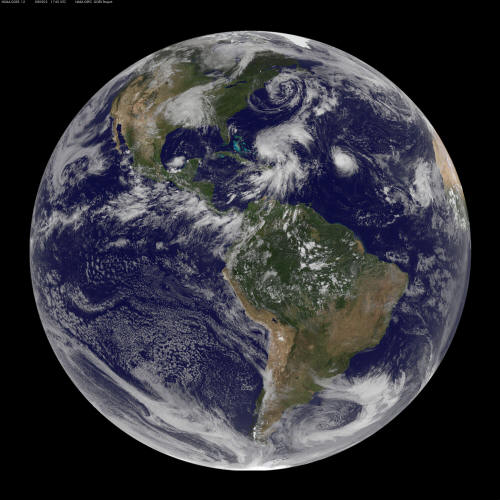 Class
74
Friday, 6/9/2017
Class
74
Friday, 6/9/2017Warm-Up:
1. Can you point northward?
2. If a nebula begins to spin rapidly, what shape will it become?
3.What "fuel" does the sun use in nuclear fusion, and what does that fuel turn into after it fuses?
4. When air rises, does that cause cloudy skies or does it cause clear skies?
5. Does air pressure increase or decrease at higher altitudes?
6. There are 40 parent atoms. How many will remain after 2 half-lives?
7. What type of current is in the mantle beneath a divergent plate boundary, a rising current or a sinking current?
8. What type of radiation gets trapped by CO2 in our atmosphere, infrared radiation or visible radiation?
Today:- Check final exam reviews. Hand out answers. Solutions to Mapping Questions
- Finish solar oven slideshows. Add two slides to the end -- 1) temperature graph 2) photo of the solar oven cooking stuff outside
Homework: Prepare for the exam. For the final, you may use notes that are handwritten one side of an 8.5" x 11" sheet of paper. If you are missing another test or quiz, be prepared to take that on exam day, too.
 Class 73
Wednesday, 6/7/2017
Class 73
Wednesday, 6/7/2017Warm-Up:
1. The picture on the right is a screen shot of a screen shot of a screen shot of a screen shot of my computer screen. How did I make the picture?
2. What is the easiest tool to use for this sort of thing?
Today:- Set up your solar oven. You can tape the plexiglass cover if you want, but that will also make it hard to remove if you want to check your food.
- Use a laptop to record the temperature for 30 minutes. Use the snipping tool to create a screen shot of your graph.
- Take at least one photograph showing your food being cooked in your solar oven.
- Insert your graph and photograph into your slideshow. Add these onto two new slides at the end of your slideshow. I know that I told you to delete the last two slides, but that was because I thought we would cook on Friday.
- At some point later in the day, come back and remove your solar oven from the courtyard. Take it to room C113. Disassemble it and stack the parts with other students' ovens
Homework: Final exam review link removed Due at the beginning of class on Friday. You may use notes that are handwritten one side of an 8.5" x 11" sheet of paper.
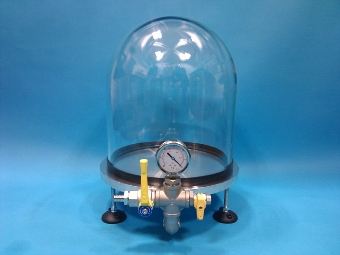 Class
71 Thursday, 6/1/2017
Class
71 Thursday, 6/1/2017Warm-Up:
What happens when you put something in a glass bell jar
(pictured on right) and pump the air out of the jar? What
would happen with...
1. Marshmallows?
2. Balloons?
3. Water?
-
Solar Oven Slideshow:
- Copy this template and insert your own material. Share with jstapleton@ccsuvt.org and with your partner(s)
- Copy a link to your slideshow and paste it into this form.
- Check the weather forecast. Solar cookout next Friday?
- Finish solar ovens
- Work on Solar Oven Slideshow
- Meet with Mr. Stapleton to discuss your grade and possible fixes.
- We have three more classes after today!
- Monday, 6/5
- Wednesday, 6/7
- Friday, 6/9
- Exam review begins on Monday.
Homework: None
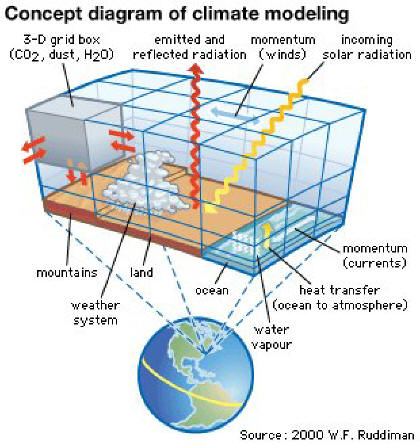
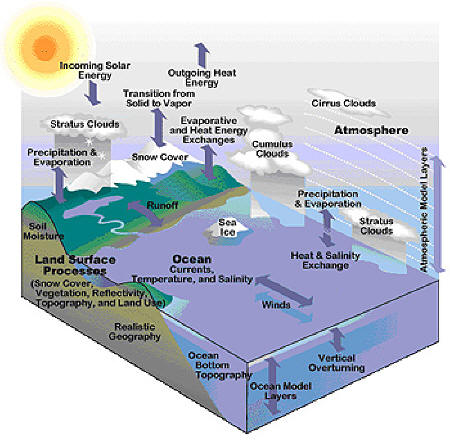 Class 70
Tuesday, 5/30/2017
Class 70
Tuesday, 5/30/2017Warm-Up:
1. What is a climate model? Example quantitative model (water rocket)
2. How do scientists know if their climate models are correct? How do they test them?
Today:- Quiz
- Finish reflectors Reflector Parts oven with reflectors
- Finish tab and slot connector system for reflectors.
- Make and test a sighting mechanism.
- Begin working on your solar oven slide show. Copy this template and insert your own material.
- We have four more classes after
today.
- Thursday, 6/1
- Monday, 6/5
- Wednesday, 6/7
- Friday, 6/9
- What's left to do?
- Solar cooker slideshow
- Solar cookout
- Final exam review (begins Monday, 6/5)
- Make up missing work
Homework: None
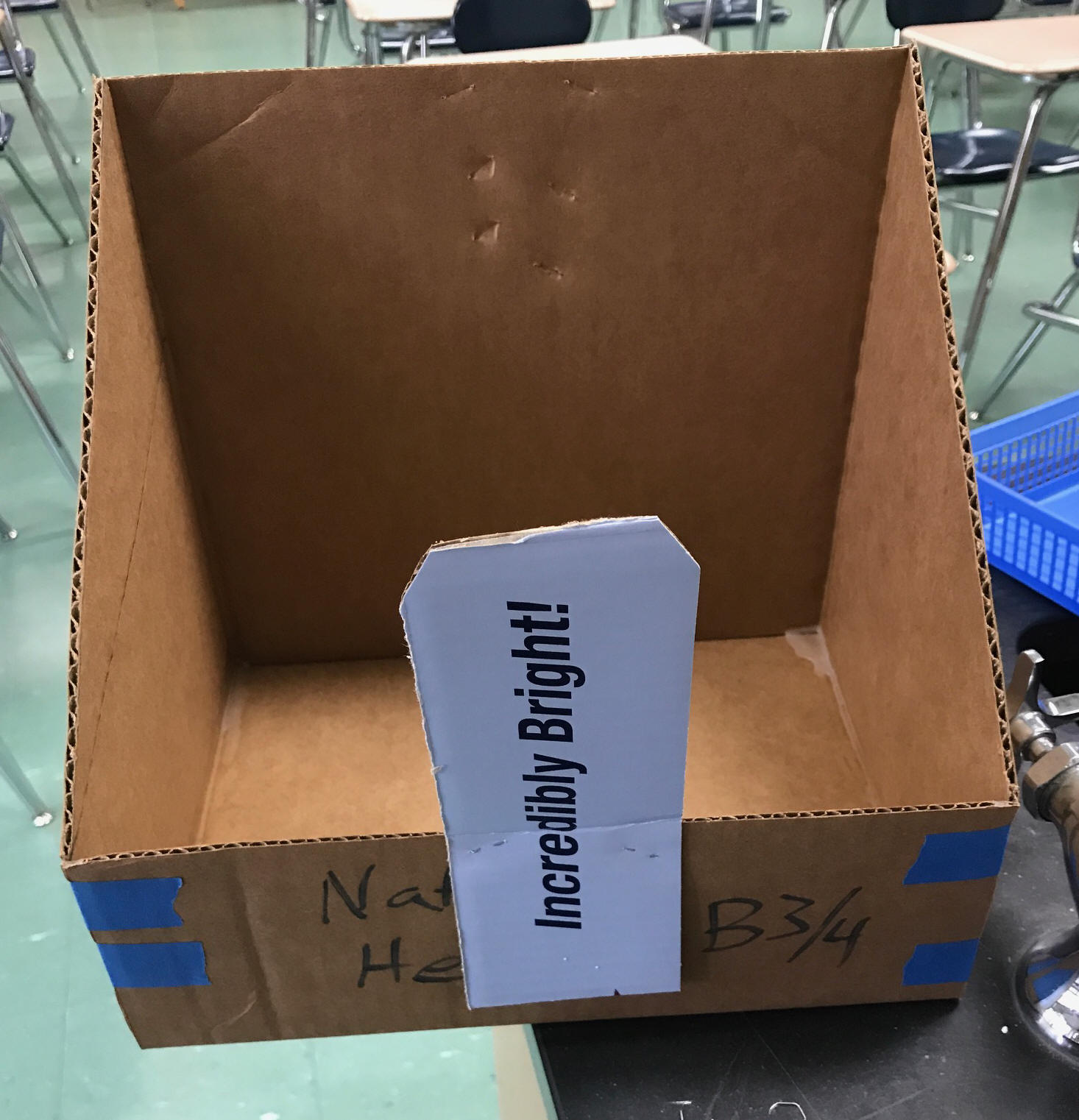 Class
69 Thursday, 5/25/2017
Class
69 Thursday, 5/25/2017Warm-Up:
Can you guess the purpose of the tab on the right?
Today:
- Finish Notes: Greenhouse Effect and Global Warming. Filled-in notes
- Finish reflectors Reflector Parts oven with reflectors
- Add tab and slot connector system for reflectors.
Homework: Quiz next class over greenhouse effect and global warming. Prepare. You may use a note card, front and back.
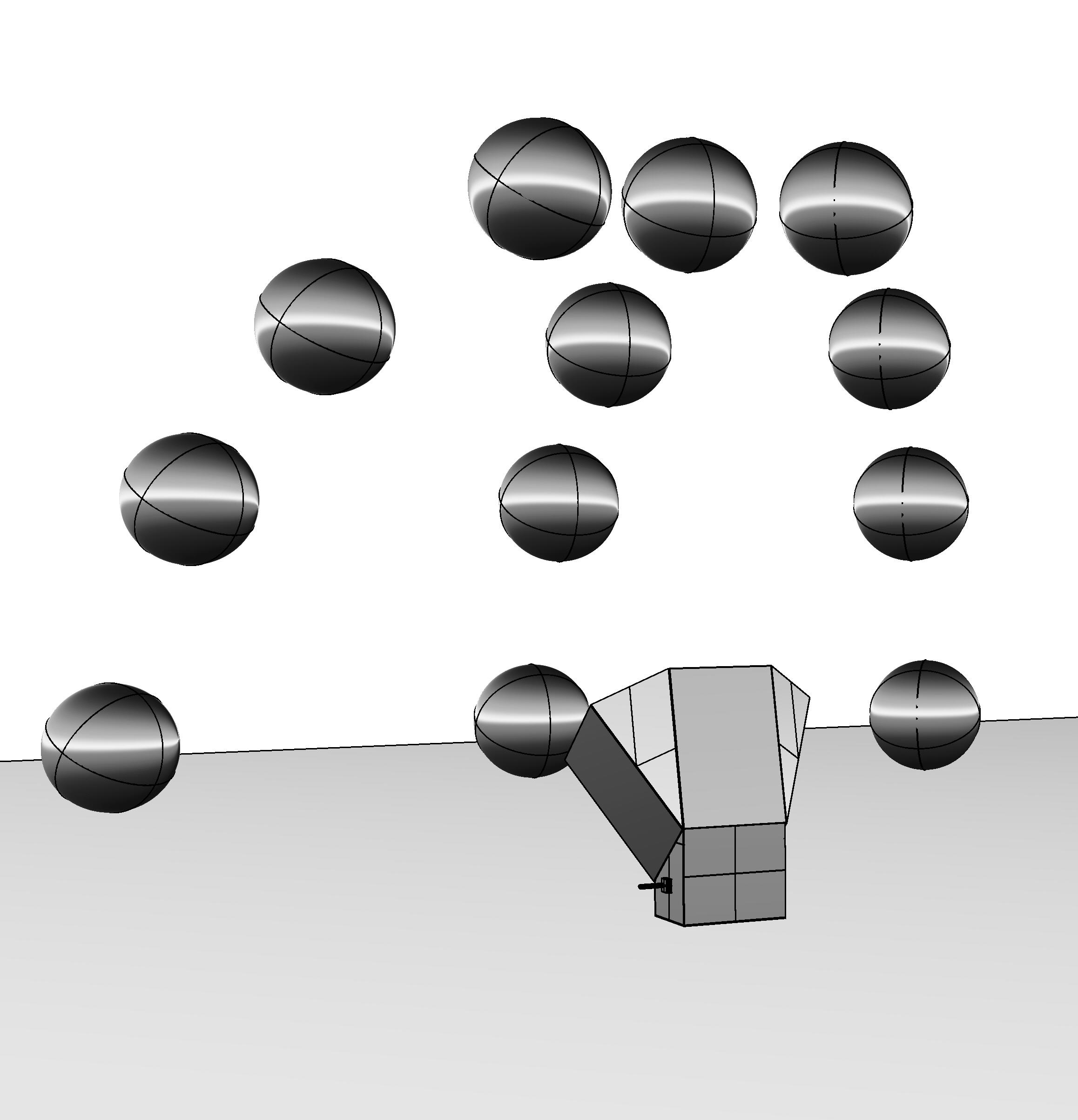 Class
69 Tuesday, 5/23/2017
Class
69 Tuesday, 5/23/2017Warm-Up:
1. In the picture on the right, the spheres represent suns. Which sun is in the correct position for maximum heating of the solar oven.
2. How are you going to make sure that your solar oven is in the best orientation?
3. Should you insulate your solar oven?
Today:
- Results of hotdog experiment.
- Notes: Greenhouse Effect and Global Warming.
- Expected climate changes in Vermont (impacts of global warming)
- Finish reflectors Reflector Parts oven with reflectors
Homework: None
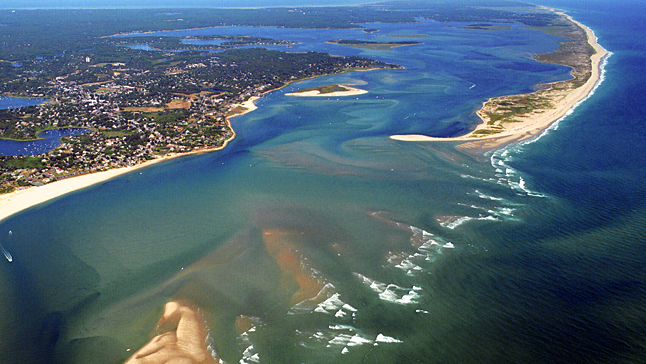 Class
68 Friday, 5/19/2017
Class
68 Friday, 5/19/2017Warm-Up:
1. How does global warming contribute to sea level rise?
2. How much is sea level projected to rise by 2100?
Today:
- Who is still missing the climate project?
- Finish hotdog experiment. Share data using this Hotdog Data Form.
- Find Cardboard for Reflectors. Reflector Parts oven with reflectors
- Begin creating reflectors
Homework: None
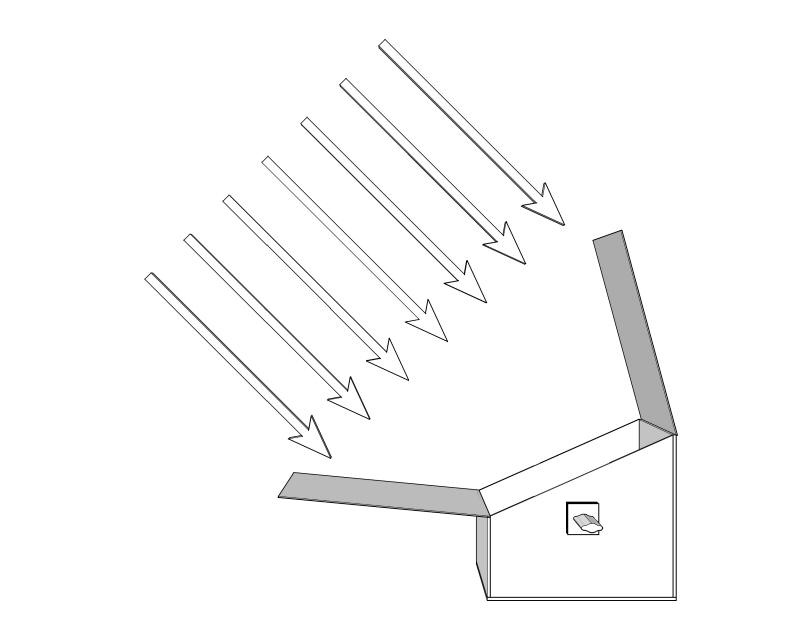 Class
67 Wednesday, 5/16/2017
Class
67 Wednesday, 5/16/2017Warm-Up:
The diagram on the right shows a solar oven with two reflectors. The arrows represent the paths of incoming rays of sunlight.
1. What is the purpose of the reflectors?
2. Which reflector is angled correctly?
3. Which rays will be reflected into the box? How can you tell?
4. How are the Earth's polar ice caps like those reflectors? How are they different?
5. What is the number 1 greenhouse gas, in terms of its impact on warming the Earth? Top 10 greenhouse gases
Today:
- Who is still missing the climate project?
- Finish liner experiment. Share data using this form.
- Find Cardboard for Reflectors. Reflector Parts oven with reflectors
- Greenhouse effect simulation. Current CO2 level
- Complete Greenhouse simulation guided worksheet
Homework: None

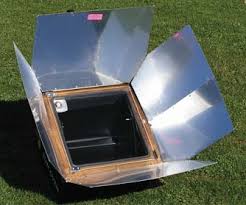 Class
66 Friday, 5/10/2017
Class
66 Friday, 5/10/20171. What is science?
2. In B1/2, most groups found that the shiny liner causes a higher temperature. In B3/4, the liners were placed in front of the temperature probe, and most groups found that the black liner causes a higher temperature. Which is actually better for a solar oven? How can we find the answer?
NDT short video
Today:
- Another experiment
- Greenhouse effect simulation.
- Greenhouse simulation guided worksheet
Homework: None
 Class
65 Wednesday, 5/10/2017
Class
65 Wednesday, 5/10/2017
1. Propose a hypothesis for this question... Will a solar ovens heat up more if its insides are shiny or if its insides are black?
2. What is your reasoning?
3. If you make a movie that is upside-down or sideways, can it be fixed? If so, how?
Today:
- Check your PowerSchool grade. If you have not submitted a Climate Map Project, your project grade will be zero until you complete the project and turn it in properly. If you have turned it in, but your link does not work or there is some other issue, you do not have a zero, but you do not have a grade for the project.
- If you want to re-do your project, that is an option.
- Return quiz
- Finish collecting solar oven data.
- Greenhouse effect simulation.
- Greenhouse simulation guided worksheet
Homework: None
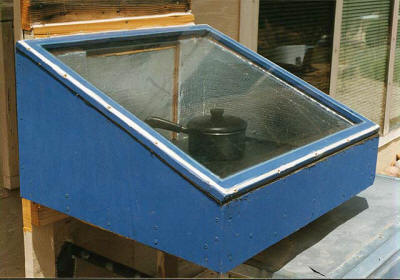 Class
64 5/8/2017
Class
64 5/8/2017This solar oven has several features that helps it create a high temperature environment using solar energy. One of those features exploits the Greenhouse Effect.
1. What part of the solar oven targets the Greenhouse Effect?
2. How does the Greenhouse Effect work?
3. What can be done to limit the effects of the Greenhouse Effect?

Today:
- Quiz -- Climate Map Drawing
- Solar Oven Experiment #1: What effect will adding
a plexiglass cover have on the temperature of a solar oven?
- Begin filling out the first side of the Data Sheet for Experiments 1 and 2
- Set up your solar oven, a light, and a laptop with
thermometer. Record the distance and angle of your
light source, relative to the surface of the solar oven.
Here's a good way to set up.
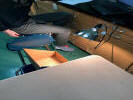
- Use Logger Pro to collect temperature data, but
first, change the sample duration and rate.
- Under the Experiment tab in logger pro, click Data Collection. In the pop-up window, se the Duration for 15 minutes and the Sampling Rate for 10 samples/minute.
- Finish filling out the first side of the Data Sheet for Experiments 1 and 2
- Greenhouse effect simulation.
Homework: None
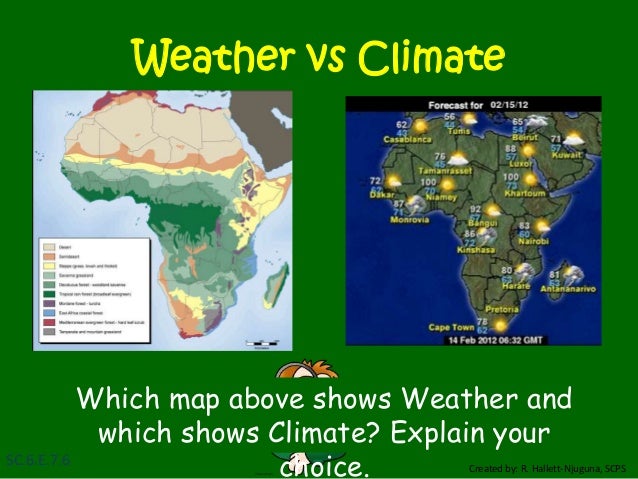 Class
63 5/4/2017
Class
63 5/4/20171. The difference between climate and weather can be summed up by saying that your _______________ determines the clothes that you wear and your _____________ determines the clothes that you buy.
2. Explain why.
Today:
- New seating chart.
- Practice quiz and time to write notes. You can use both sides of a note card. No drawings are allowed -- words only.
- Begin new unit: Solar Ovens and Climate Change.
Video Links:
Homework: Prepare for quiz next class.
 Class
62 5/2/2017
Class
62 5/2/20171. Did a warm front or a cold front move into our area last night? How can you tell?
On the map to the right...
2. Which letter is in a major desert?
3. Which letter is in a major rainforest?
4. Which letter is in a cold ocean current?
5. Which letter is dry because of the rain shadow effect?
6. Which letter is wet because of breezes from the ocean?
Today:
- New seating chart.
- Submit your project by the end of class today. This is the last class day to work on the project. Projects that are not turned in soon will be given a zero in PowerSchool until they are turned in.
- How to turn in your project.
- Project grading rubric.
- Here's a simple video showing how to complete this project.
- Submit your completed project using this form.
Climate
Project Submission Form
Video Links: See misterstapleton YouTube channel for videos showing how to draw climate maps.
Homework: Complete practice quiz, version 2
1. How do you make a video in Moviemaker?
2. When you have made your video in Moviemaker, can you just turn in the Moviemaker project, or do you have to save the project in movie form?
3. How do you get your completed movie to your Google drive?
4. How do you share your movie with Mr. Stapleton?
5. How do you submit the form to turn in your movie?
Today:
- Work on Climate Map Project. Project grading rubric.
- Here's a simple video showing how to complete this project.
- Submit your completed project using this form. Climate Project Submission Form
- Project due date: Tuesday, May 2nd. There will not be cameras in class on Tuesday, but you will have some time to submit your video on that day.
Video Links: See misterstapleton YouTube channel for videos showing how to draw climate maps.
Homework: Watch these videos and take notes to help you create your own video. Practice Quiz. South America Check out other climate map videos on my YouTube channel.

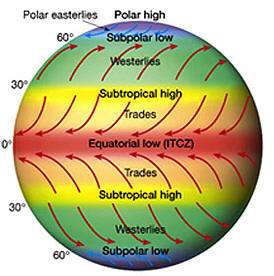 Class
61 4/19/2017
Class
61 4/19/20171) The Earth's prevailing winds are shown on the first diagram to the right. Sometimes we have local winds that are different from prevailing winds. Can you guess the difference between "local" and "prevailing?"
2) What causes Earth's Prevailing winds?
3) The other diagrams show the jet streams, which are different from both local and prevailing winds. Can you guess what causes the jet streams?

Today:
- Work on Climate Map Project. Project grading rubric.
- If you correctly submitted a Rhino file to Mr. Stapleton, your continent should be laser cut. Video your continent in the current simulator. Do not turn on the simulator when people are recording videos. It is very loud.
- Project due date: Tuesday, May 2nd.
Video Links: See misterstapleton YouTube channel for videos showing how to draw climate maps.
Homework: Watch these videos and take notes to help you create your own video. Practice Quiz. South America Check out other climate map videos on my YouTube channel.
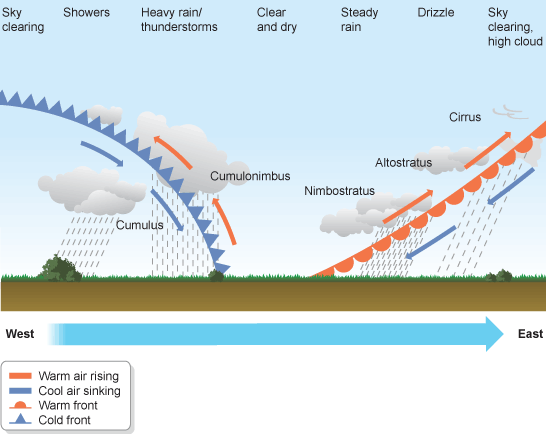 Class
60 4/17/2017
Class
60 4/17/2017When warm air moves into an area of colder air, that's called a warm front. When cold air moves into an area of warmer air, it's called a cold front.
1. In both cases, there is precipitation. Why?
2. Who would experience most of the precipitation, someone in the warm air or someone in the cold air?
3. Which type of front creates more violent storms. Why?
Today:
- Finish North America map?
- Check for working climate map file links.
- Print another copy of your continent -- Do this in C113.
- Complete your own continent climate map
- Begin Climate Map Project. Project grading rubric.
Video Links: See misterstapleton YouTube channel for videos showing how to draw climate maps.
Homework: Watch these videos and take notes to help you create your own video. Practice Quiz. South America Check out other climate map videos on my YouTube channel.
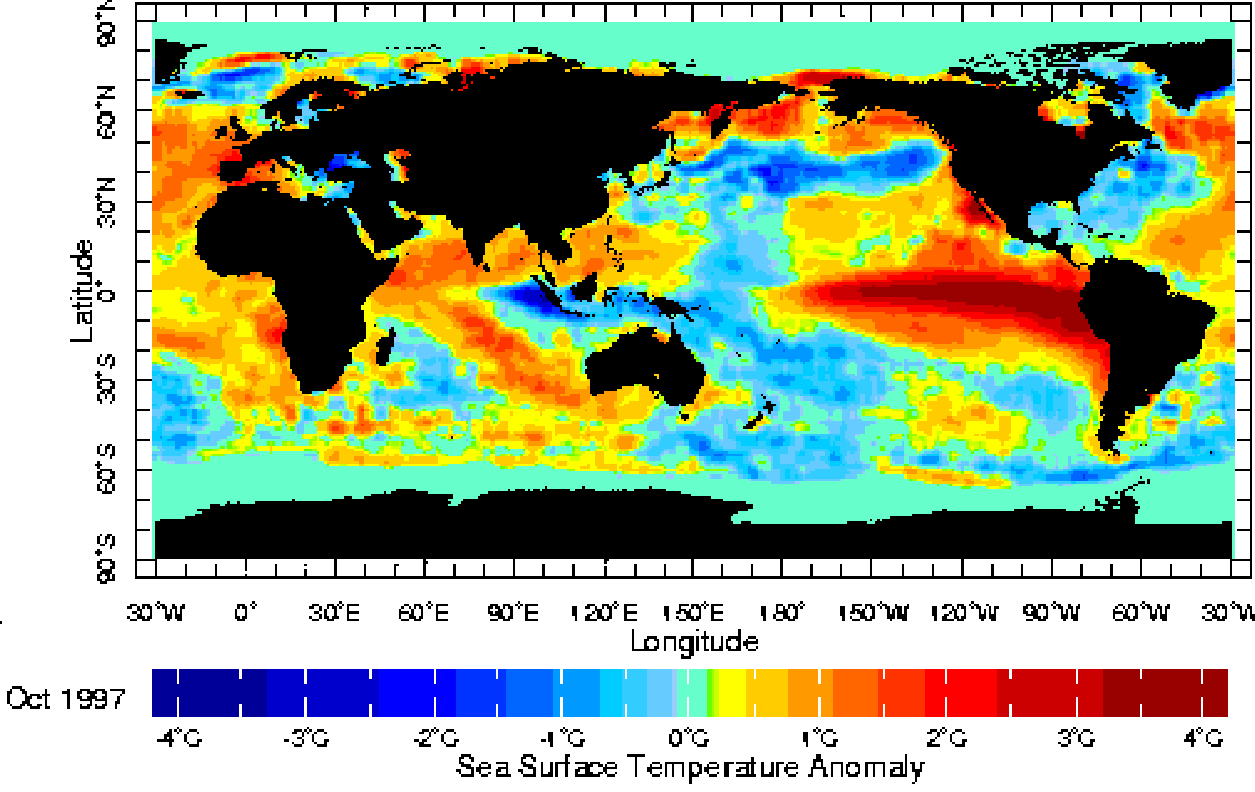 Class
59 Thursday, 4/12/2017
Class
59 Thursday, 4/12/20171) What is El Nino?
2) How and why does it affect the weather?
Today:
- B1/2 Finish the practice quiz.
- North America map
- Complete your own continent climate map
Video Links: See misterstapleton YouTube channel for videos showing how to draw climate maps.
Homework: None
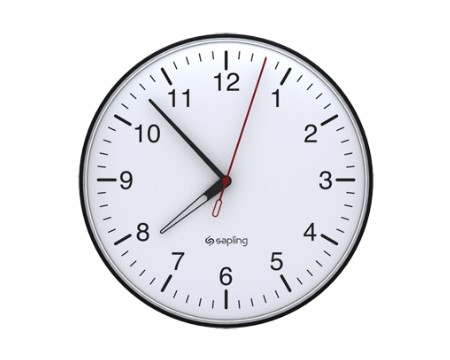 Class
58 Tuesday, 4/11/2017
Class
58 Tuesday, 4/11/2017Today:
-
In the library computer lab...Design Your Own Continent
-
Get the Continent Project Map Template. If, for some reason, this link is not working, I can email you the file.
-
Save the template on your F:Drive
-
Draw your map using the sketch tool. Measure it with the distance tool.
-
Continent Requirements:
-
Must cross the equator.
-
Must reach 50 degrees latitude in at least one hemisphere.
-
Must be wide enough to have at least one of all of the climates that we have discussed (at least 2 inches wide on model)
-
Model cannot be too wide for the current simulator (no wider than 5 inches at the widest point).
-
-
Save your completed model on your F:Drive. Name it "[your name]". This will be a Rhino file with a .3dm suffix.
-
Create a jpeg image of your continent. Save it on your F:Drive. Name it "[your name] continent"
-
Print a paper copy of your continent on the printer in the computer lab. Show it to Mr. Stapleton for approval before sharing your files.
-
Upload both your Rhino file model and your jpeg image to your Google Drive, and set their shared settings to "public."
-
Submit your continent model and .jpeg using this Continent Model Turn-In Form
-
- B3/4 Finish the practice quiz.
- North America map
Video Links:
Homework: None
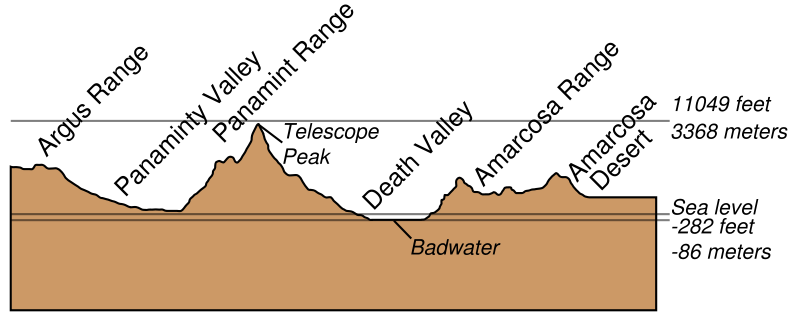 Class
57 Friday, 4/7/2017
Class
57 Friday, 4/7/20171. Which location in the diagram probably gets the most rain and snow?
2. Which location in the diagram is probably the driest?
Today:
- B1/2: Return Quiz
- South America
- Practice Quiz
- North America
- Begin sketching your continent.
- Mapping Climate Features -- understanding why certain climates exist where they do.
Video Links:
-
Circulation of atmsophere -- effects on oceans
Homework: None
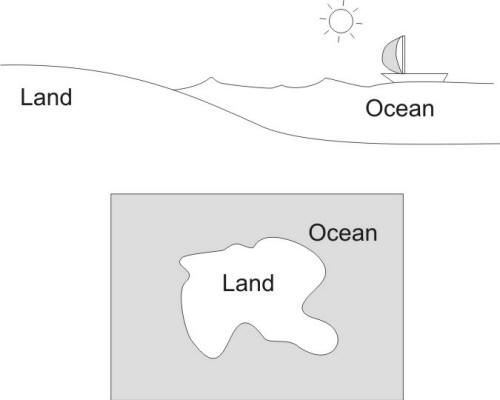 Class
56 Wednesday, 4/5/2017
Class
56 Wednesday, 4/5/20171. In the picture on the top right, can you suggest a reason why there is an onshore breeze (ocean to land)?
2. A monsoon is a seasonal wind that either blows onshore or offshore, depending on the season. In the lower picture on the right, during what season would you expect an onshore breeze to occur? What about an offshore breeze? [Hint: think about the locations of high and low pressure due to air temperature.]
Today:
- B1/2: Quiz
- Mapping Climate Features -- understanding why certain climates exist where they do.
- Videos from Class:
- Climate Map Drawing Part 1
- Climate Map Drawing Part 2
- Climate Map Drawing Part 3
Homework: None
 Class
55 Monday, 4/3/2017
Class
55 Monday, 4/3/20171. During the day, what heats up faster, the sand at the beach or the water at the beach?
2. During the night, which cools down faster?
3. Which way is the wind likely to blow in the picture on the right? Why?
Today:
- B3/4: Quiz
- B1/2 -- Prevailing Winds Notes Notes on circulation of the atmosphere Watch the video from class
- Mapping Climate Features -- understanding why certain climates exist where they do
Homework: B1/2 -- Quiznext class over the last page of the Notes on circulation of the atmosphere . You may use one side of a 3"x5" note card, but you may not draw pictures on your note card. You may include directions.
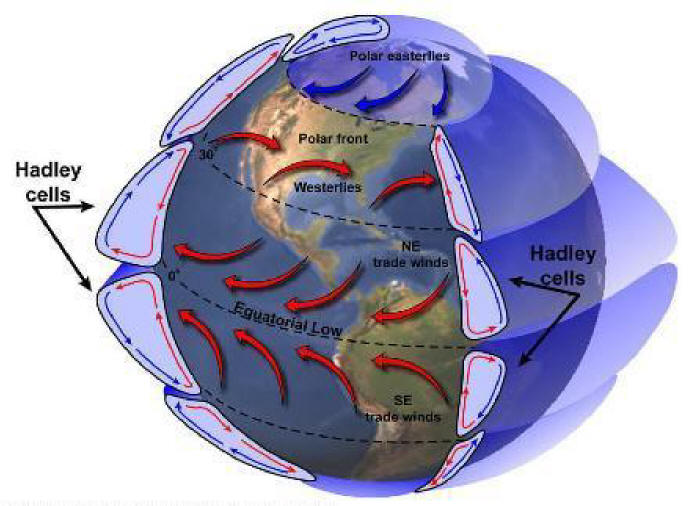 Class 54 Thursday, 3/29/2017
Class 54 Thursday, 3/29/20171. Why does the picture on the right show air rising at the equator?
2. Why is air sinking at the North Pole?
3. Why are the winds curved?
4. Why are some arrows red, while others are blue?
5. Snow is forecast for this weekend. Do you expect the air pressure to be increasing or decreasing?
Today:
- Finish National Geographic Cyclone. Answer questions. Not required of absent students.
- Prevailing Winds Notes Notes on circulation of the atmosphere Absent students watch this video from class
Homework: B3/4 -- Quiz over the last page of the Notes on circulation of the atmosphere . You may use one side of a 3"x5" note card, but you may not draw pictures on your note card. You may include directions.
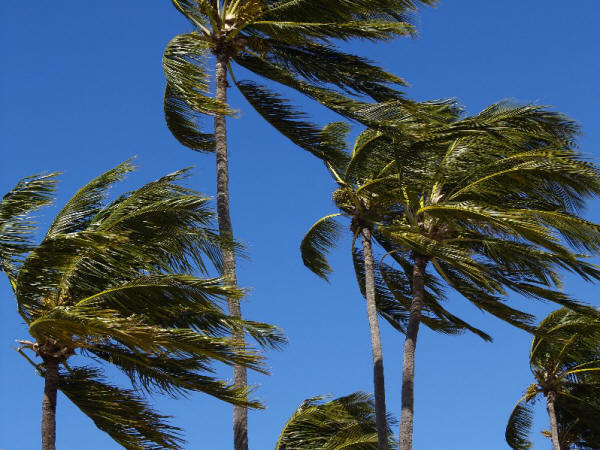 Class
53 Tuesday, 3/28/2017
Class
53 Tuesday, 3/28/20171. What causes wind?
2. Which way does a tree bend in a strong west wind?
3. How did nor'easters get their name?
4. If a wind comes from the south, what does that tell us about air pressure?
Today:
- Grades are in PowerSchool. Discuss modified percentages this quarter.
- Is there anyone who 1) has all assignments completed in PowerSchool and 2) would like to replace a quiz grade with the test grade?
- Notes: Coriolis Effect Filled-In Notes
- Watch National Geographic Cyclone. Answer questions. Not required of absent students.
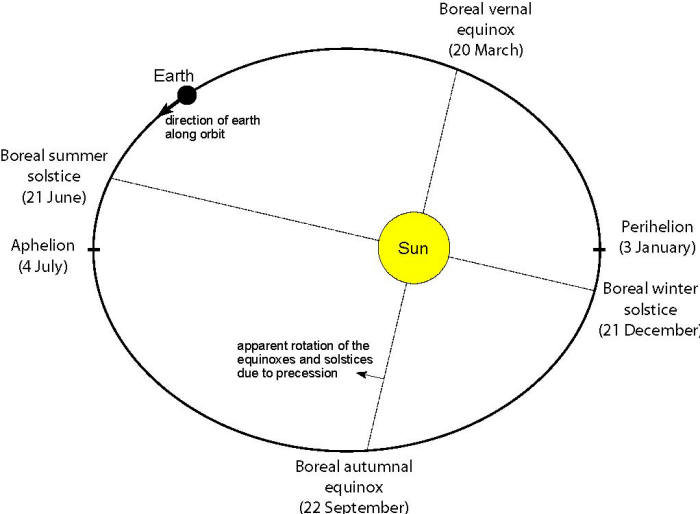 Class
52 Friday, 3/23/2017
Class
52 Friday, 3/23/20171. What does that mean?
2. When did spring begin?
3. Compared to Fall, do spring days have more daylight, less daylight, or the same amount of daylight?
4. On what dates are we closest to the sun and farthest from the sun?
Today:
- Test
- New unit: Climate.
Homework: None
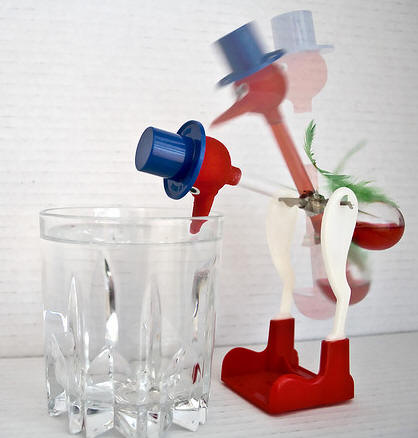 Class
51 Monday 3/20/2017
Class
51 Monday 3/20/2017Today:
- Finish Test Review Filled in version
- Test preparation time
- New unit: Climate.
Homework: Test next class -- this Friday, 3/24.
 Class
50 Thursday 3/16/2017
Class
50 Thursday 3/16/20171. How can I make a paper clip float on water?
2. I have a glass of water with a piec of foam floating in it. The foam "wants" to move to the edge of the glass. Why? How can I make it stay in the middle?
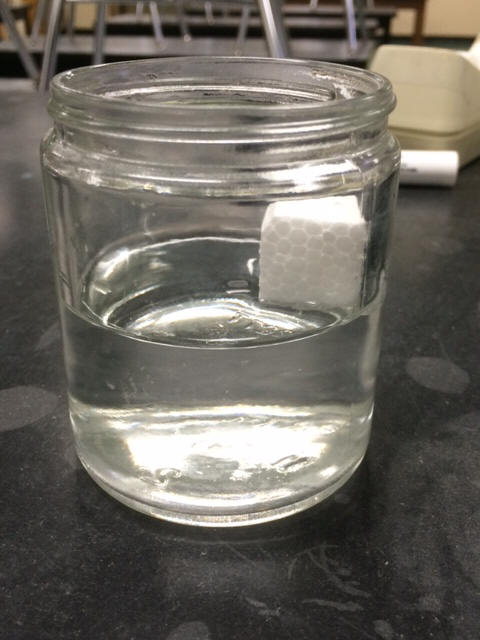
Today:
- Quiz: Structure of Matter, States of Matter, and More
- Test Review
Homework: B1/2 -- no homework. B3/4 -- Finish test review.
 Class
49 Friday 3/10/2017
Class
49 Friday 3/10/20171. What will happen if I sprinkle pepper on the surface of some water and then I touch the water with a soapy finger?
2. Why does this happen?
Today:
- "Mind Melting" Water tricks video
- Check homework.
- Cloud Formation at the equator
- Video clips:
- Quiz preparation time.
- Test Review
- Game?
Homework: B1/2 -- Prepare for quiz next class (Tuesday). What's on the quiz...
- Quiz Review Answer Key
- Pages 2 and 4 of Structure of matter (especially water), Part 1 (states of matter and water molecules) Filled in Version
- Notes: Heat Transfer and States of Matter Filled in version
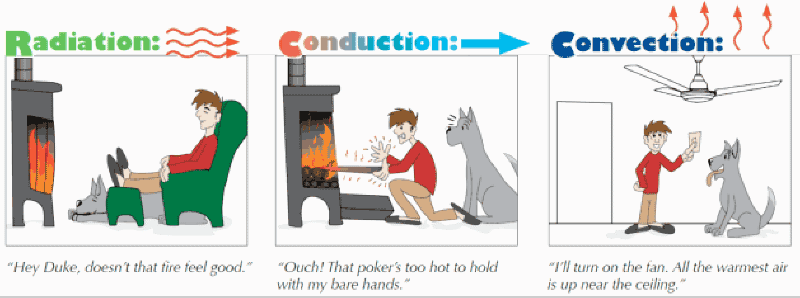 Class
48 Wednesday 3/8/2017
Class
48 Wednesday 3/8/2017Heat can be transferred by Conduction, Convection, or Radiation.
1. Conduction is heat transfer by touch. Provide an example of heat transfer by conduction.
2. Radiation is heat transfer by electromagnetic waves. Provide an example of heat transfer by radiation.
3. Convection is heat transfer by moving currents of flowing material. Provide an example of heat transfer by convection.
4. What is absolute zero?
Today:
- Return and discuss quizzes
- Finish notes -- Notes: Heat Transfer and States of Matter (cloud in a bottle)
-
Quiz Review over:
- Pages 2 and 4 of Structure of matter (especially water), Part 1 (states of matter and water molecules) Filled in Version
- Notes: Heat Transfer and States of Matter Filled in version
- Cloud Formation at the equator
- States of Matter Phet Simulation
- Quiz preparation time
Homework: B1/2 -- Finish the Quiz Review
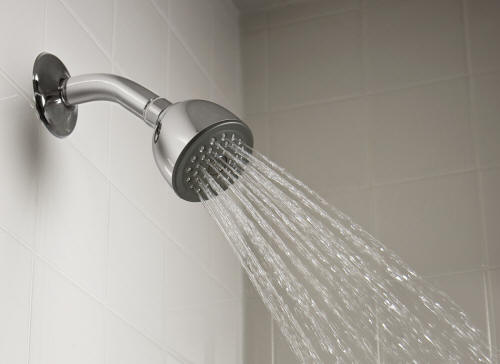 Class
47 Thursday 2/22/2017
Class
47 Thursday 2/22/20171. A man, a dog, and a raw steak sat in a 200ºF room for half an hour. What happened to each of them? Answer
2. Getting into a swimming pool usually feels cold. After a while, it doesn't feel so cold. But after you've been in the pool for a while, getting out feels colder than staying in. Why?
3. If you take a shower, and you want to stay warm, why is it better to dry off inside the shower, rather than drying off outside the shower?
Today:
- Quiz: Chemistry vocabulary
- Finish Notes: Heat Transfer and States of Matter
- Melt snow. Snow melt ingredients
- Cloud Formation
- States of Matter Phet Simulation
Homework: None
 Class
46 Tuesday 2/21/2017
Class
46 Tuesday 2/21/20171. Billy capped an empty water bottle, put it in his backpack. When he arrived at his destination, it looked like this. Describe Billy's trip.
2. Are clouds solid, liquid, or gas? Explain your reasoning.
Today:
- Check/discuss Vocabulary practice (Element, atom, molecule, etc.) Answers to vocab practice
- Notes: Heat Transfer and States of Matter
- States of Matter Phet Simulation
Homework: Quiz next class over Structure of matter (especially water), Part 1 and Vocabulary practice (Element, atom, molecule, etc.)
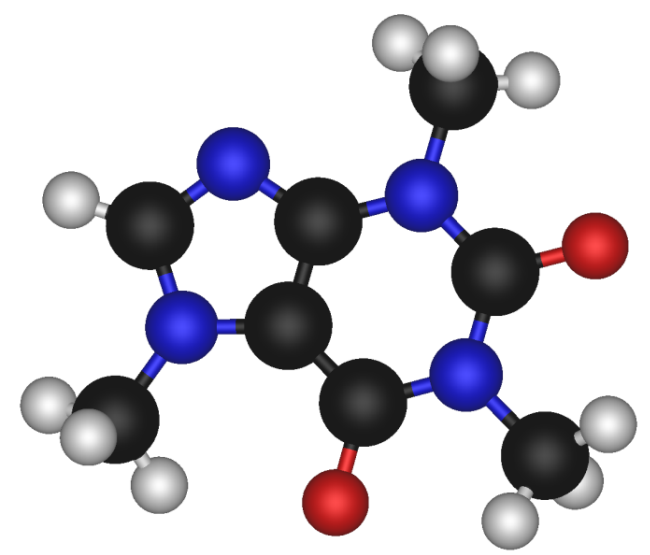 Class
45 Friday 2/17/2017
Class
45 Friday 2/17/2017Blue = Nitrogen. Black = Carbon. Grey = Hydrogen. Red = Oxygen.
1. Is caffeine a molecule?
2. Is caffeine a compound?
3. How many atoms are in caffeine?
4. How many elements?
5. How many ions?
6. What is the chemical formula for caffeine?
Today:
- Return quizzes
- Check your grades in PowerSchool.
- Water molecule page of notes.
- States of Matter Phet Simulation
- Vocabulary practice (Element, atom, molecule, etc.)
Homework: Complete Vocabulary practice (Element, atom, molecule, etc.)
 Class
44 Wednesday 2/15/2017
Class
44 Wednesday 2/15/20171. How does the barometer work?
2. Have you ever made anything like this in the bathtub?
3. What is a vacuum? Why is it important?
4. The substande in the barometer is mercury. Would this work with water?
Today:
- Quiz -- Pressure.
- Structure of matter (especially water), Part 1 Filled-In Notes
- States of Matter Phet Simulation
Homework: None
 Class
43 Thursday 2/9/2017
Class
43 Thursday 2/9/20171. What happens when you drip a drop or two of water on wax paper, and then you poke at it with an eyedropper?
2. Why does it happen?
- Finish pressure notes Filled-in notes
- Pressure practice questions
- Note card for quiz.
- Structure of matter (especially water), Part 1
- States of Matter Phet Simulation
Homework: Quiz next class over pressure notes and practice questions.
 Class
42 Tuesday 2/7/2017
Class
42 Tuesday 2/7/20171. What relationship do you see between temperature (red) and air pressure (black)?
2. Why does that relationship exist?
- Quiz -- Mass, volume, density, weight
- Air pressure notes.
- Pressure practice questions
Homework: none
 Class
41 Friday 2/3/2017
Class
41 Friday 2/3/20171. How do suction cups work?
2. Why won't they work on the moon?
Today:
- Finish Film canister submarines and turn-in procedures/explanations. Test some procedures.
- Practice Quiz over physical properties. Quickly make a note card if you want.
- Air pressure notes.
Homework: Quiz next class over physical properties.
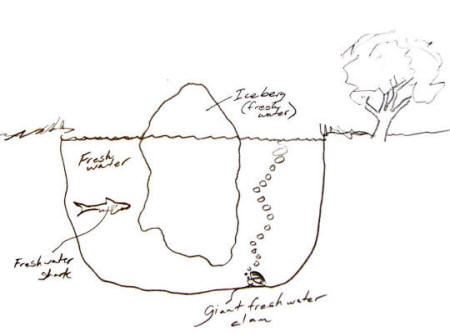
 Class
40 Wednesday 2/1/2017
Class
40 Wednesday 2/1/20171. Someone fills a styrofoam cup with water and places it in a freezer. What happens to the water's mass, volume, density, and weight as it freezes?
2. An iceberg is floating in a lake. What would happen to the water level if the iceberg were to suddenly melt? Why?
Today:
- Remember the new seating chart.
- Check homework. 18, 19, 20, 22.
- Finish Physical properties of matter notes
- Film canister submarines
Homework: None
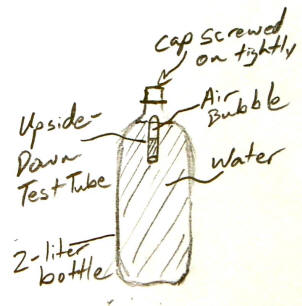 Class
39 Monday 1/30/2017
Class
39 Monday 1/30/2017This bottle on the right contains a "cartesian diver." The diver dives when the bottle is squeezed, and the diver rises when the bottle is released.
1. As the bottle is squeezed, what is happening to the diver's density, volume, and mass?
2. Why are those properties changing in those ways?
Today:
- New Seats
- Return Midterms and collect them again.
- Physical properties of matter notes
-
2nd Semester:
- Properties of Matter (particularly, water)
- Physical Properties
- Chemical Properties
- Water Cycle
- Weathering and erosion
- Climate and Climate Change
- Designing solutions for the future
- Properties of Matter (particularly, water)
Homework: Finish through #22 on Physical properties of matter notes. You can skip #21.
Warm-Up:
What do all of these words and phrases have in common?
-
Was it a can on a cat I saw?
-
Now sir, a war is won!
-
Able was I ere I saw Elba.
-
Racecar
-
Step on no pets!
-
Madam I'm adam.
-
A man, a plan, a canal, Panama!
-
Go hang a salami; I'm a lasagna hog.
-
Mr. Owl ate my metal worm.
Today:
- Return and discuss geology test
- Midterm review materials: Links removed.
Homework: Prepare for midterm. You may use both sides of a 5"x8" note card.
 Class
37 Thursday 1/12/2017
Class
37 Thursday 1/12/2017Warm-Up:
The diagram on the right shows a cross forming two line segments of coins. The vertical segment has 5 coins and the horizontal segment has 4 coins. How can you form two segments of 5 by moving just one coin?
Today:
- Geology Test
Homework: Prepare for midterm
Warm-Up: A rock sample contains a radioactive element with a half-life of 2 million years.
1. Fill-in the table below.
2. Approximately how old is a rock if it has 32 of these daughter atoms and 8 parent atoms?
|
Rock Age in
Half-Lives |
Percentage of
Parent Atoms in Rock |
Rock age in
years |
|
1 |
|
|
|
2 |
|
|
|
3 |
|
|
|
4 |
|
|
Today:
- Return project grading sheets.
- Alternative Project -- for students who did not and will not complete the video project.
- Finish Geology Test Review Answers
- More Geology Test Practice Answers These are the answers to the extra practice that I handed out today.
- Time to work on note cards -- You may use a 3"x5" notecard on Thursday's test.
Homework: Prepare for Geology Test next class.
 Class
35 Friday 1/6/2017
Class
35 Friday 1/6/2017Warm-Up: In the diagram on the right...
1. Which rock formation is younger, E or D? How do you know?
2. Which rock formation is younger, I or C? How do you know?
3. Which rock formations are igneous?
4. What types of rocks are the other formations?
5. Which rock formations can be dated with radiometric methods?
Today:
- Return project grading sheets. Discuss what to do about missing projects.
- Geology Test Review
Homework: Geology test next Thursday. More review on Tuesday.
 Class
35 Wednesday 1/4/2017
Class
35 Wednesday 1/4/2017Warm-Up:
The diagram on the right illustrates the "Rock Cycle." In the rock cycle, there are three types of rocks: igneous, sedimentary, and metamorphic.
1. How is an igneous rock made?
2. How is a sedimentary rock made?
3. How is a metamorphic rock made?
Today:
- Return Quizzes
- Bill Nye Rock Cycle
- Finish Deep Sea Challenge
-
Upcoming Classes:
- Friday (1/5) -- Prepare for Unit Test over Geology. Projects will be graded. Begin midterm review?
- Tuesday (1/10) -- Finish unit test preparation. Begin review for midterm. Midterm will cover Astronomy and Geology units.
- Thursday (1/12) -- Unit test over Geology. Midterm review.
- Tuesday (1/17) -- Midterm review.
- Thursday (1/19) -- B1/2 Exam
- Friday (1/20) -- B3/4 Exam
Homework: None
 Class
34 Thursday 12/22/2016
Class
34 Thursday 12/22/2016Warm-Up: The picture on the right was taken in the deepest part of the ocean.
1. Is the material that you can see on the ocean floor mafic or felsic?
2. What type of plate
boundary is nearby? You should be able to narrow your
guesses down to two.
3. If you were to drill downward through the crust from this location, all the way into the mantle, would that part of the mantle be relatively hot or relatively cool?
Today:
- Quiz -- Use this link to view the videos -- link to the videos
- Watch DeepSea Challenge
Homework: None
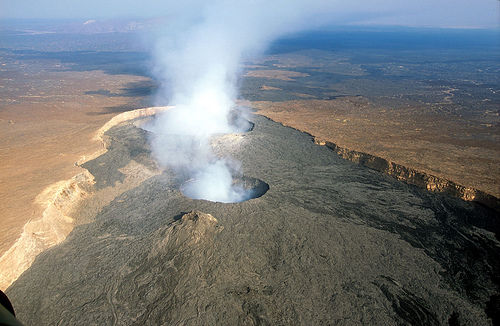 Class
33 Tuesday 12/20/2016
Class
33 Tuesday 12/20/2016Warm-Up:
1. What type of plate boundary feature is shown on the
right?
2. In what country is it?
3. Which of the following can be found here?
Mafic magma, felsic magma,
composite cone volcano, shield volcano, violent eruptions,
gentle eruptions, shallow earthquakes, deep earthquakes, new
ocean crust, ocean trench, tall mountains, situated over a hot
part of the mantle
Today:
- Return quizzes
- Plate Boundary Pictures PowerPoint
- One last practice quiz
- DeepSea Challenge
Handouts/Links:
Video links from last year's classes: These cover how to draw plate boundary diagrams, and more.
- Plate tectonics part 1 -- C/C Convergent
- Plate tectonics part 2 -- O/O Divergent, O/C Convergent
- Plate tectonics part 3 -- O/O Convergent
- Plate tectonics part 4 -- C/C Transform, Ocean Hotspot
Homework:
Prepare for Quiz next class. The quiz will be almost exactly like this practice quiz. The only difference will be that the map will be new and the letters and answer choices will be scrambled.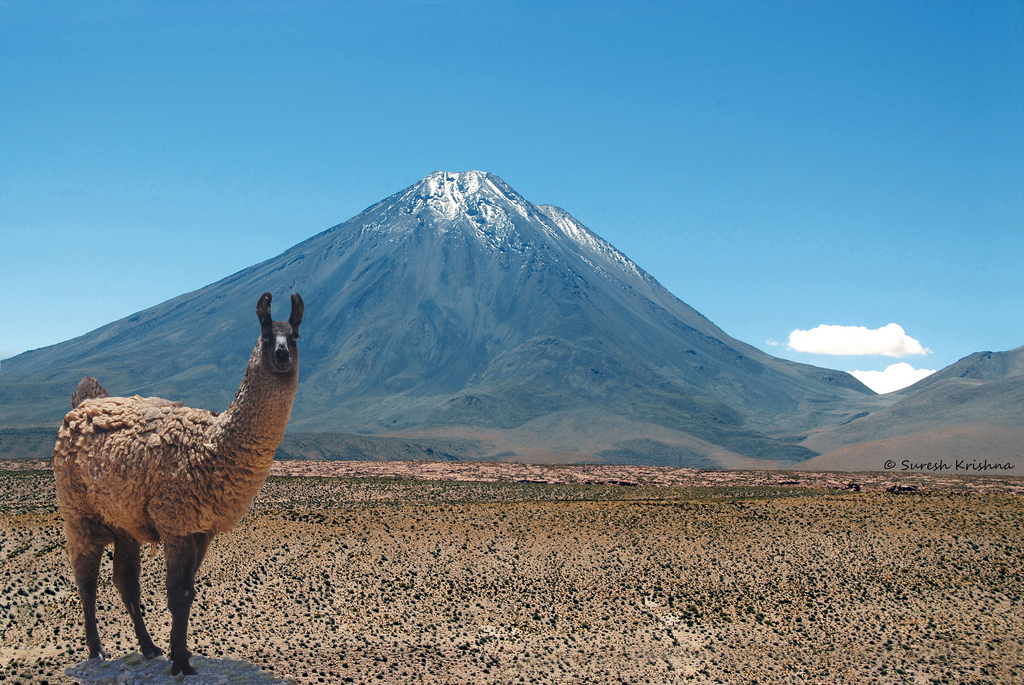 Class
32
Friday 12/16/2016
Class
32
Friday 12/16/20161. What type of plate boundary feature is shown on the right?
2. In what country is it?
Today:
- Plate Tectonics, Quiz 1
- Plate Boundary Pictures PowerPoint
- Plate Tectonics Practice Quizzes
- Prepare for Quiz 2:
- Quiz on Thursday over Plate Tectonics, Part 2. It will also be similar to the practice quiz. You will be able to watch project videos during the quiz. You can have a list of the videos that you find most useful. Vote for the best ones
- Suggestions:
- :
- Identify one helpful video of each type. Here's a link to the videos.
- Open up a video of one of the features.
- Match the feature to a feature on the test map. Identify its letter on the map.
- Watch the video to find the real-world location of the feature.
- Watch the video and complete the last section. Find the column of letters matching the feature you have identified. Darken the letter next to each description that is true for the plate feature.
- Open a video for another feature. Repeat steps...
- Continue...
- :
Handouts/Links:
Video links from last year's classes: These cover how to draw plate boundary diagrams, and more.
- Plate tectonics part 1 -- C/C Convergent
- Plate tectonics part 2 -- O/O Divergent, O/C Convergent
- Plate tectonics part 3 -- O/O Convergent
- Plate tectonics part 4 -- C/C Transform, Ocean Hotspot
Homework:
Prepare for Two Quizzes:- Quiz on Friday over Plate Tectonics Notes Part 1. It will be similar to the practice quiz. You may use notes on 1 side of a 3x5 note card.
- Quiz on Tuesday over Plate Tectonics, Part 2. It will also be similar to the practice quiz. You will be able to watch project videos during the quiz. You can have a list of the videos that you find most useful.
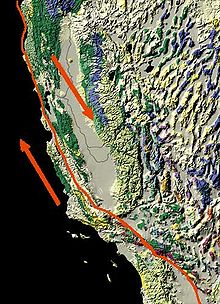
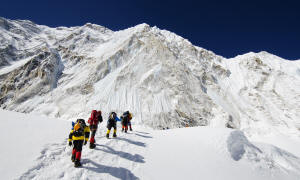 Class
31
Wednesday 12/14/2016
Class
31
Wednesday 12/14/2016 Warm-Up:
What tectonic features are shown and where are they in the
world?
Warm-Up:
What tectonic features are shown and where are they in the
world?
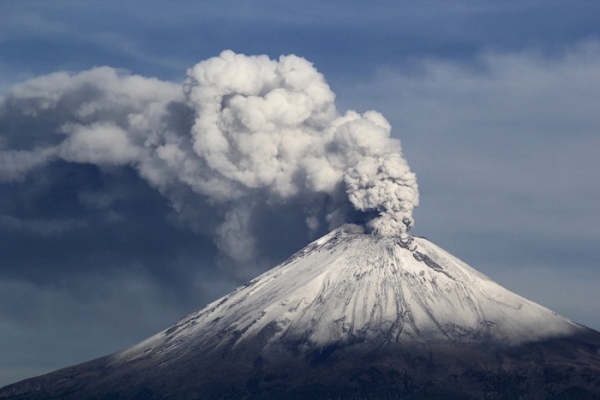
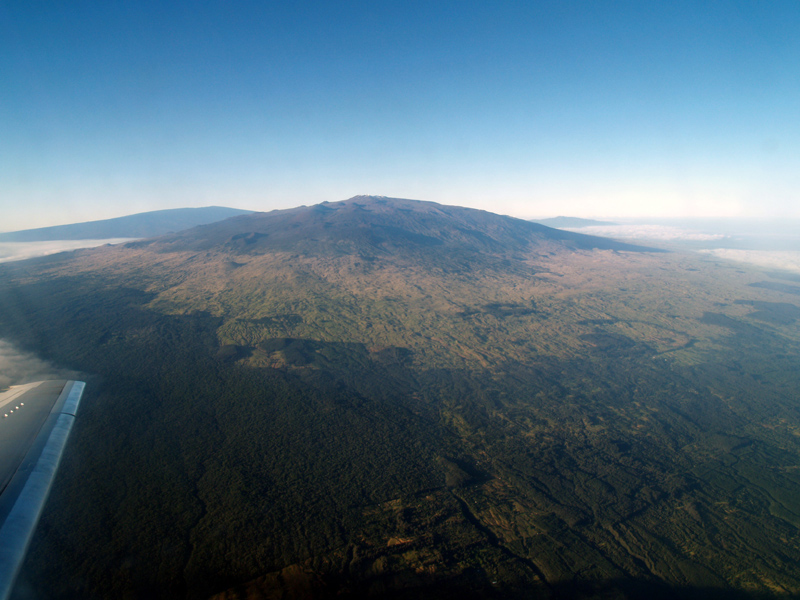

Today:
- Check/review the homework.
- Finish submitting your video project. There is no time for working in Moviemaker or taking photos. If you need more work time, you will have to do the work outside of class.
- Plate Boundary Pictures PowerPoint
- Plate Tectonics Practice Quizzes
- Prepare for Quizzes:
- Quiz on Friday over Plate Tectonics Notes Part 1. It will be similar to the practice quiz. You may use notes on 1 side of a 3x5 note card.
- Quiz on Tuesday over Plate Tectonics, Part 2. It will also be similar to the practice quiz. You will be able to watch project videos during the quiz. You can have a list of the videos that you find most useful.
Handouts/Links:
Video links from last year's classes: These cover how to draw plate boundary diagrams, and more.
- Plate tectonics part 1 -- C/C Convergent
- Plate tectonics part 2 -- O/O Divergent, O/C Convergent
- Plate tectonics part 3 -- O/O Convergent
- Plate tectonics part 4 -- C/C Transform, Ocean Hotspot
Homework:
Prepare for Two Quizzes:- Quiz on Friday over Plate Tectonics Notes Part 1. It will be similar to the practice quiz. You may use notes on 1 side of a 3x5 note card.
- Quiz on Tuesday over Plate Tectonics, Part 2. It will also be similar to the practice quiz. You will be able to watch project videos during the quiz. You can have a list of the videos that you find most useful.
 Class
30
Monday 12/12/2016
Class
30
Monday 12/12/2016Match each feature name to the
corresponding feature on the plate map on the right.
1.
Ocean/Continent Convergent
2.
Transform Boundary
3.
Continent/Continent Convergent
4.
Hotspot
5.
Ocean/Ocean Divergent
6.
Ocean/Ocean Convergent
7.
Continent/Continent Divergent
Each of the
real-world locations below forms in an area that is similar to
one of the lettered locations on the map.
Match each real-world location
to its corresponding map location.
8.
Mid-Atlantic Ridge
9.
San Andreas Fault, California
10.
East Africa
11.
Andes Mountains (South America)
12.
Himalayas (Mt. Everest)
13.
Japan
14.
Hawaii
17. Which areas can have deep-focus earthquakes?
Today:
- Today is the last class day to work on projects. Links to completed videos should be turned in using the form by the beginning of next class. If you are not finished on time, you may continue to work on your video outside of class, but, until you have turned in the project, you may have a temporary zero grade for the project.
-
Video Editing Option -- You will get feedback from other
students. You may change your video after receiving
this feedback.
- Fill out a video editing checklist for 2 other students from your class. Do this for students whose videos are near yours on the video library spreadsheet.
- Turn your checklist in to Mr. Stapleton. He will hand it to the student whose video you watched.
- Directions for completing and turning in projects.
- Use this link to submit your completed project: Stop Motion Animation Project Submission Form
- Work on Stop Motion Animation Project. Project Video Requirements.
- Plate Boundary Pictures PowerPoint
Handouts/Links: Plate Tectonics, Part 2.
Video links from last year's classes: These cover how to draw plate boundary diagrams, and more.
- Plate tectonics part 1 -- C/C Convergent
- Plate tectonics part 2 -- O/O Divergent, O/C Convergent
- Plate tectonics part 3 -- O/O Convergent
- Plate tectonics part 4 -- C/C Transform, Ocean Hotspot
Homework: Complete the practice test at the end of Plate Tectonics, Part 2. This will be an open-video quiz; you may watch any of these videos (video library spreadsheet) as you complete the quiz.
1. What's the next letter in this sequence? M A M J J A S O N
2. What figure comes next in this sequence?

Today:
-
Video Editing Option -- You will get feedback from other
students. You may change your video after receiving
this feedback.
- Fill out a video editing checklist for 2 other students from your class. Do this for students whose videos are near yours on the video library spreadsheet.
- Turn your checklist in to Mr. Stapleton. He will hand it to the student whose video you watched.
- Directions for completing and turning in projects.
- Use this link to submit your completed project: Stop Motion Animation Project Submission Form
- Work on Stop Motion Animation Project. Project Video Requirements.
- Plate Boundary Pictures PowerPoint
Handouts/Links: Plate Tectonics, Part 2.
Video links from last year's classes: These cover how to draw plate boundary diagrams, and more.
- Plate tectonics part 1 -- C/C Convergent
- Plate tectonics part 2 -- O/O Divergent, O/C Convergent
- Plate tectonics part 3 -- O/O Convergent
- Plate tectonics part 4 -- C/C Transform, Ocean Hotspot
In Google Drive, have you ever...
1. ...filled out a Google Form?
2. ...changed your shared settings?
3. ...pasted a link to your document?
Today:
- Directions for completing and turning in projects.
- Use this link to submit your completed project: Stop Motion Animation Project Submission Form
- Work on Stop Motion Animation Project. Project Video Requirements.
- Plate Boundary Pictures PowerPoint
Handouts/Links: Plate Tectonics, Part 2.
Video links from last year's classes: These cover how to draw plate boundary diagrams, and more.
- Plate tectonics part 1 -- C/C Convergent
- Plate tectonics part 2 -- O/O Divergent, O/C Convergent
- Plate tectonics part 3 -- O/O Convergent
- Plate tectonics part 4 -- C/C Transform, Ocean Hotspot
 Class
28
Friday 12/2/2016
Class
28
Friday 12/2/2016The stop motion animation video on the right was created by a student from Brown's River Middle School. Have you ever seen it?
Today:
- Discuss somebody's bad idea last class.
- If you want to use your own camera for animating, you must first demnonstrate to me that you can take 15 pictures and transfer them to your drive.
-
Work on
Stop Motion Animation Project.
- Create Videos from Practice Pictures.
- Project Video Requirements.
- Plate Boundary Pictures PowerPoint
Handouts/Links: Plate Tectonics, Part 2.
Video links from last year's classes: These cover how to draw plate boundary diagrams, and more.
- Plate tectonics part 1 -- C/C Convergent
- Plate tectonics part 2 -- O/O Divergent, O/C Convergent
- Plate tectonics part 3 -- O/O Convergent
- Plate tectonics part 4 -- C/C Transform, Ocean Hotspot
Homework: None
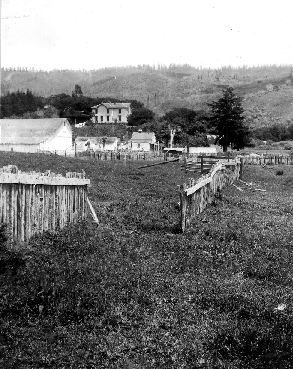 Class
27
Wednesday 11/30/2016
Class
27
Wednesday 11/30/2016The photograph on the right shows a fence that crosses a plate boundary. The fence used to be a continuous straight line.
1. Why don't the two parts of the fence connect?
2. What type of plate boundary is this?
Today:
- Quiz
- Plate Boundary Pictures PowerPoint
-
Stop Motion Animation Project.
- Create Videos from Practice Pictures.
- Project Video Requirements.
Handouts/Links: Plate Tectonics, Part 2.
Video links from last year's classes: These cover how to draw plate boundary diagrams, and more.
- Plate tectonics part 1 -- C/C Convergent
- Plate tectonics part 2 -- O/O Divergent, O/C Convergent
- Plate tectonics part 3 -- O/O Convergent
- Plate tectonics part 4 -- C/C Transform, Ocean Hotspot
Homework: None
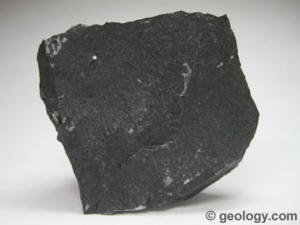
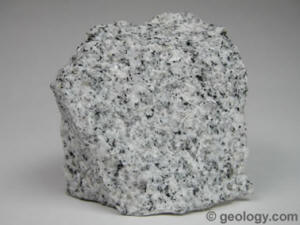 Class
26
Monday 11/28/2016
Class
26
Monday 11/28/20161. Which of the rocks on the right is mafic? Which is felsic?
2. Which of the rocks on the right is most similar to the material in the Earth's mantle?
Today:
- Practice quiz over last class' warm-up.
- Draw the rest of the plate boundaries.
- Begin Plate Tectonics Project.
Handouts/Links: Plate Tectonics, Part 2.
Video links from last year's classes: These cover how to draw plate boundary diagrams, and more.
Homework: Quiz next class over the warm-up questions from last class. Note that one more question (#9 has been added). You will not be allowed to use a note card.

 Class
25
Thursday 11/17/2016
Class
25
Thursday 11/17/20161. Which one is granite, and which is basalt?
2. Which rock is more dense? Which is less dense?
3. Which rock is more viscous (gooier) when it is melted into magma or lava? Which is less viscous (runnier)?
4. Which rock is classified as mafic, and which one is felsic?
5. Which type of rock is most often found in ocean crust? Which one is often found in continental crust?
6. When these rocks are melted into lava, which one can form steeper volcanoes? Which one forms rounder, flatter volcanoes?
7. When these rocks are melted into lava, which one causes the most explosive volcanic eruptions? Which causes gentler eruptions?
8. Which type of rock is most similar to the sediment that exists on the ocean floor?
9. Which type of rock is most similar to the material in the Earth's mantle?
Today:
- Draw some more plate boundaries. Plate Tectonics, Part 2.
- Volcano video.
Handouts/Links: Plate Tectonics, Part 2.
Video links from last year's classes: These cover how to draw plate boundary diagrams, and more.
Homework: Quiz next Wednesday over the warm-up questions above. You will not be allowed to use a note card.
 Class
24
Tuesday 11/15/2016
Class
24
Tuesday 11/15/2016Today:
- Check and discuss assignment from last class -- Sheet 2 of Plate Tectonics Notes Part 1. If you didn't do the homework, don't get it out. Listen and do the work at home. Watch the video from class to check your answers. Then turn it in later.
- Plate Tectonics, Part 2. Drawing plate boundaries. Volcano video.
Handouts/Links: Plate Tectonics, Part 2.
Homework: None
 Class
23
Friday 11/11/2016
Class
23
Friday 11/11/20161. What volume of dirt is in a hole that is 3 feet wide, 4 feet long, and 2 feet deep?
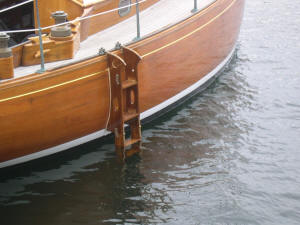 2. A four foot long ladder hangs over the side of a boat.
The top of the ladder is two feet above the water line.
When the tide rises three feet, where will the top of the ladder
be?
2. A four foot long ladder hangs over the side of a boat.
The top of the ladder is two feet above the water line.
When the tide rises three feet, where will the top of the ladder
be?
3. A child throws a stick across a river. A dog
re trieves the stick without getting wet. How?
trieves the stick without getting wet. How?
Today:
- Quiz
- Plate Tectonics. Plate Tectonics Notes Part 1
Handouts/Links:
Homework: None
These are the ages of the magma tubes in the diagram on the right:
J = 8my K = 5my L = 10my M = 12my N = 14my
1. How old is layer G?
2. How old is the Fish fossil?
3. How old is the earthquake fault?
Today:
- Check Homework -- Practice Quiz #2. Discuss how the quiz will be graded.
- Prepare for test
- Begin Plate Tectonics. Plate Tectonics Notes Part 1
Handouts/Links:
Homework: Prepare for the quiz.
1. Which layer is probably older, Layer S (in diagram A) or layer H (in diagram B)?
2. Which layer is probably the oldest of all? Why?
3. Which layer is probably the youngest of all? Why?
Today:
- Finish Ages of Rocks, Part 2. Try the practice quiz.
- More practice
Handouts/Links:
Homework:
 Class
20
Wednesday 11/2/2016
Class
20
Wednesday 11/2/2016How old is this rock sample? The big dot is a parent atom, and the small dots represent daughter atoms. The half-life of the parent element is 2 million years.
Today:
- Return Astronomy Test
- Can you replace a quiz grade with your test grade? You can if you do not have any zeroes in PowerSchool, AND you have 3/3 on your notebook check. If you scored lower than 3/3 on the notebook check, and you have since compiled all of your notebook contents, you can get your notebook check grade changed by showing your notebook contents to Mr. Stapleton.
- If you are entitled to areplacement,
complete the steps below.
- Open this spreadsheet.
- Make a copy of the spreadsheet.
- Open PowerSchool
- Enter your quiz and test scores into the yellow cells on the spreadsheet.
- Replace one quiz percentage with your orange test percentage.
- Try this with different quizzes in order to see which replacement will give you the highest quiz average.
- Tell Mr. S. which quiz you would like to replace.
- Ages of Rocks, Part 2: Radiometric Dating / Absolute Dating
Handouts/Links:
Homework:
- None
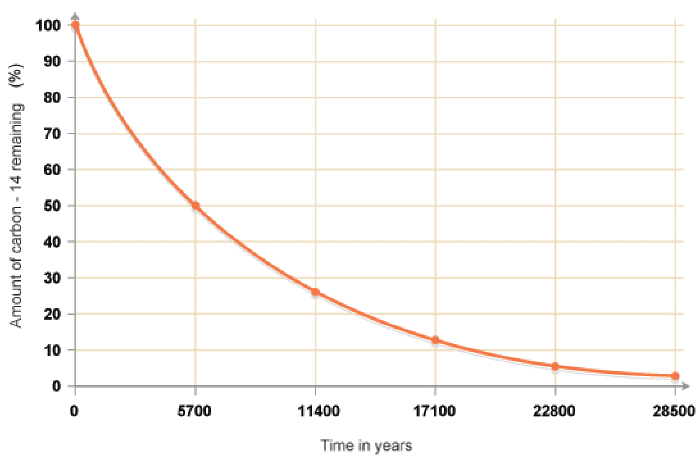 Class
19
Monday 10/31/2016
Class
19
Monday 10/31/20161. Suppose a scientist digs up a bone, and the bone has 12% of its original Carbon-14 atoms remaining. According to the graph on the right, how old is the bone?
2. A half-life is the amount of time it takes for half of something to go away or to change into something else. Use the graph to determine the half-life of Carbon-14.
Today:
- Astronomy Test
- Ages of Rocks, Part 2: Radiometric Dating / Absolute Dating
Handouts/Links:
Homework:
- None
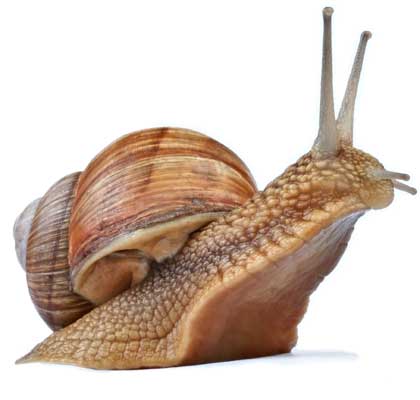 Class
18
Thursday 10/27/2016
Class
18
Thursday 10/27/2016A log is 64 feet long. Starting from one end of the log, a snail slimes its way toward the other end of the log, covering half of the remaining distance each day.
1. How many days does it take the snail to reach a point one foot from the other end of the log?
2. How many days does it take for the snail to reach the other end?
3. How does this relate to the age of rocks?
4. Did you see the sunrise this morning? Are sunrises and sunsets more red or less red when viewed from an airplane at high altitude?
Today:
- Return Quizzes
- Check Notebook Contents
- Unit Test Note card work time -- note card size = 1 letter sized sheet, both sides.
- Unit test on Monday over all of the astronomy quizzes.
- Discuss replacing a quiz grade.
Handouts/Links:
Homework:
- Everything is homework, for now.
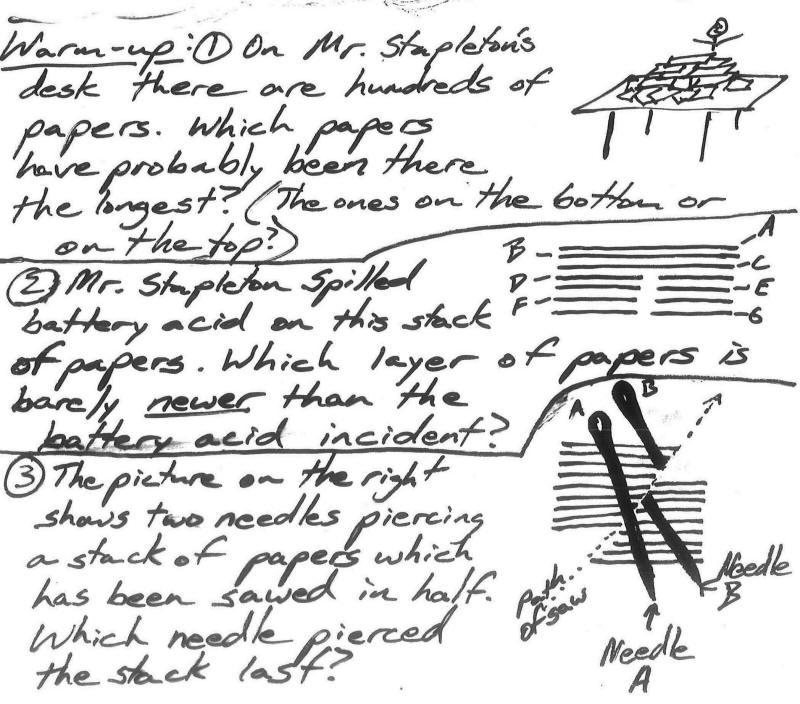
Today:
- Quiz
- Check Notebook Contents
- Unit test on Monday over all of the astronomy quizzes.
- Next Unit: Ages of Rocks (Rock Dating).
- Discuss replacing a quiz grade.
Handouts/Links: Ages of Rocks, Part 1
Homework:
- Prepare for the test.
- Get your notebook in order. There will be a notebook check on Wednesday. You will be asked to present some randomly selected notebook contents. If you have them all, you will receive 100% on the notebook check. If you have all of your other assignments turned in, you will be able to replace a quiz grade with your test grade.
 Class
16
Tuesday 10/18/2016
Class
16
Tuesday 10/18/20161. How many planets are sometimes visible to the "naked eye?" Which ones?
2. How well do you know Uranus? 10 Question Quiz
Today:
- Finish Notes: Star Lifetimes, Part 2
- Prepare for Quiz over Star Lifetimes. Here's what's on the quiz....
- Game
Handouts/Links:
- % Hydrogen and helium in the universe
- PowerPoint --Stars, the Big Bang, and The Greenhouse Effect
- Videos (library streaming)
- Waves Links
Homework:
- Prepare for quiz on Tuesday
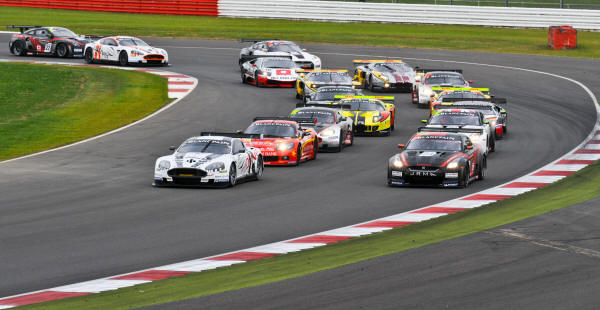 Class
15
Friday 10/14/2016
Class
15
Friday 10/14/2016If you're standing next to a race track, what do you hear as the cars pass you?
a. Their pitch changes from high to low.
b. Their pitch changes from low to high.
c. There is no change in pitch.
Today:
- B3/4: Return Quiz.
- Watch more of star death video.
- Finish Star Lifetimes, Part 2
Handouts/Links:
- PowerPoint --Stars, the Big Bang, and The Greenhouse Effect
- Videos (library streaming)
- Waves Links
Homework:
- none
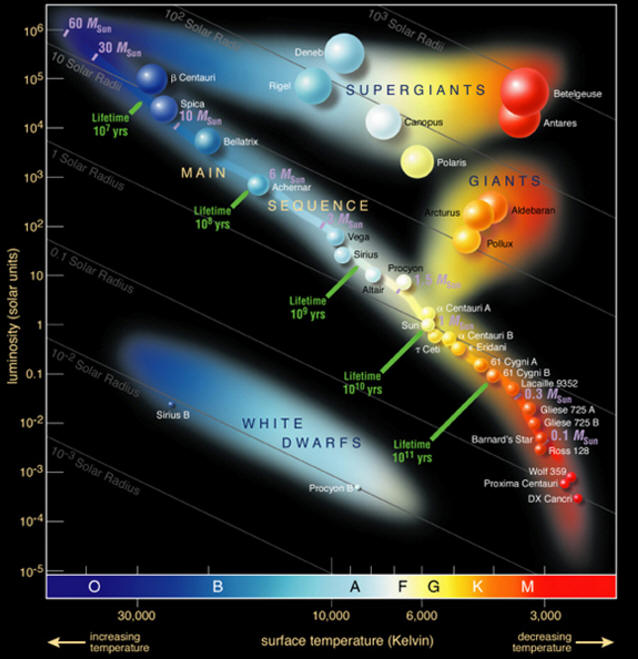 Class
14
Wednedsday 10/12/2016
Class
14
Wednedsday 10/12/2016The figure on the right is a graph with two axes, a Y axis and an X axis.
1. Where's the Y axis? Where's the X?
2. What variable is changing along the X axis?
3. What variable is changing along the Y axis?
4. What are the diagonal lines?
Today:
- B1/2: Return Quiz. B3/4: Take Quiz
- Notes: Star Lifetimes, Part 1 Filled-out version
- Star Lifetimes, Part 2
Handouts/Links:
- PowerPoint --Stars, the Big Bang, and The Greenhouse Effect
- Videos (library streaming)
Homework:
- B3/4: Quiz next Wednesday. For this quiz, you may use only 1 side of a 3x5 notecard.
 Class
13
Monday 10/10/2016
Class
13
Monday 10/10/2016What do you notice about the photograph of stars?
Today:
- B1/2: Quiz. B3/4: Quiz next class.
- Notes: Star Lifetimes, Part 1
- Star Lifetimes, Part 2
Handouts/Links:
- PowerPoint --Stars, the Big Bang, and The Greenhouse Effect
- Videos (library streaming)
- Seven ages of Starlight, part I -- start @ 30:00 for red giants
- Seven ages of starlight, part II -- start @ 17 for supernovae
- Who's Afraid of a Big Black Hole?
Homework:
- B3/4: Quiz next Wednesday. For this quiz, you may use only 1 side of a 3x5 notecard.
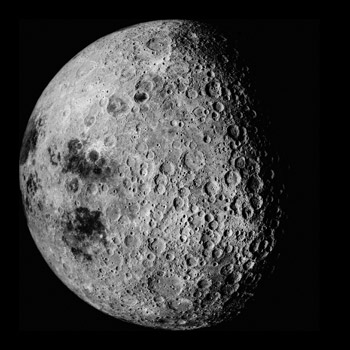
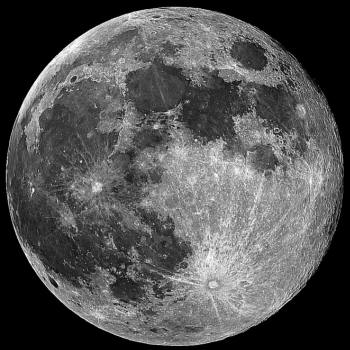 Class
12
Thursday 10/6/2016
Class
12
Thursday 10/6/2016Our moon does not have an atmosphere.
1. Why doesn't the moon have an atmosphere?
2. What color is the sky on the moon?
3. On the moon, which would fall faster, a feather or a hammer?
4. Why are there so many craters on the moon?
5. Which of the pictures on the right show(s) our moon?
Today:
- Return Quizzes
- Finish Video and review answers to questions. Here's a copy of the answers.
- What to have in your notebooks
- Course expectations
- Notes: Objects in Space
- Quiz: Objects in Space
- Notes: Solar System Formation
- Quiz: Solar System Formation
- Questions: Birth of Earth Video
- Formation of Earth video link. Questions to answer while watching video. Video Answers If you want to watch the video from home, log into your CCSU Gmail account and click this link. It will tell you the school username and password for video access.
- Star Lifetimes, Part 1
Handouts/Links: PowerPoint --Stars, the Big Bang, and The Greenhouse Effect
Homework:
- B1/2: Short quiz next class over the video questions. For this quiz, you may use only 1 side of a 3x5 notecard.
- B3/4: Quiz next Wednesday.
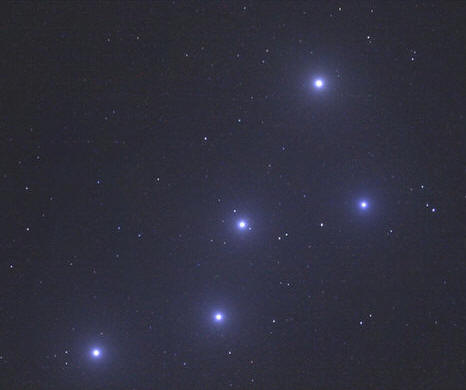 Class
11
Friday 9/30/2016
Class
11
Friday 9/30/20161. Do you know the name of the constellation on the right?
2. How big is our solar system, in comparison with the rest of the Universe?
scale of universe video
Today:
- Quiz Review
- Grades are updated in PowerSchool -- Check your grade in PowerSchool
- Organize notebooks
- Course expectations
- Notes: Objects in Space
- Quiz: Objects in Space
- Notes: Solar System Formation
- Prepare a notecard for the quiz.
- Formation of Earth video link. Questions to answer while watching video.
Handouts/Links: Solar System Formation Notes -- Filled-in Version of Notes -- Scanned From Mr. Stapleton's Notes
Homework:
- Quiz on Tuesday. Study. Read your notes and make sure that you understand them. Have your notecard ready.
- If you did not find Polaris, find one of the stars in the big dipper or Casseopeia. Measure the star's altitude with your quadrant. Draw a diagram showing which star you found. Write down the time, date, and your name. Turn it in before the end of the quarter.
1. The first diagram on the right shows four hydrogen atoms that combine to make one helium atom. What looks wrong?
2. E = mc2 is a famous equation. What do
each
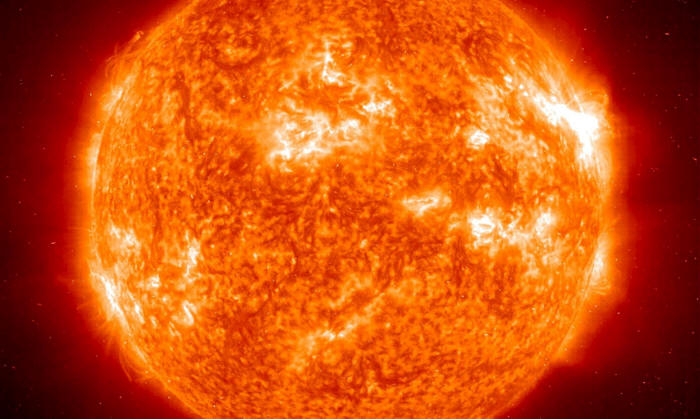 of the letters in the equation represent?
of the letters in the equation represent?
Today:
- Grades are updated in PowerSchool
- Organize notebooks.
- Finish Solar System Formation Notes
Handouts/Links: Solar System Formation Notes
Homework:
- If you did not find Polaris, find one of the stars in the big dipper. Measure its altitude with your quadrant. Draw a diagram showing which star you found. Write down the time, date, and your name. Turn it in before the end of the quarter.
 9
Monday 9/26/2016
9
Monday 9/26/20161. What's the best way to form pizza dough into a pizza?
2. Why?
Today:
- Check in with missing assignments
- Return Quizzes -- The "test" has been downgraded to a quiz.
- Solar system walk -- abbreviated
- Begin Solar System Formation Notes
Handouts/Links: Solar System Formation Notes
Homework:
- If you did not find Polaris, find one of the stars in the big dipper. Measure its altitude with your quadrant. Draw a diagram showing which star you found. Write down the time, date, and your name. Turn it in before the end of the quarter.
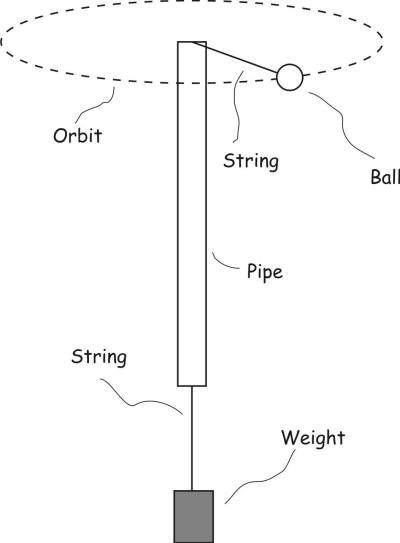 Class
8
Thursday 9/22/2016
Class
8
Thursday 9/22/20161. Look at the diagram on the right. What will happen if I grab the pvc pipe and swing the ball around, as shown?
2. Why will that happen?
3. This is a model of a real physical system. Can you guess what some of the parts of the model are supposed to represent?
Today:
- Return papers
- Look at the moon
- Show me your planet one last time.
- Test
- Check for notebook contents
- Course expectations
- Notes: Objects in Space
- Check your grade for this class in PowerSchool
- Solar system walk -- abbreviated
- Begin Solar System Formation Notes
Handouts/Links: Mr. Stapleton's copy of Objects in Space notes
Homework:
- If you did not find Polaris, find one of the stars in the big dipper. Measure its altitude with your quadrant. Draw a diagram showing which star you found. Write down the time, date, and your name. Turn it in before the end of the quarter.
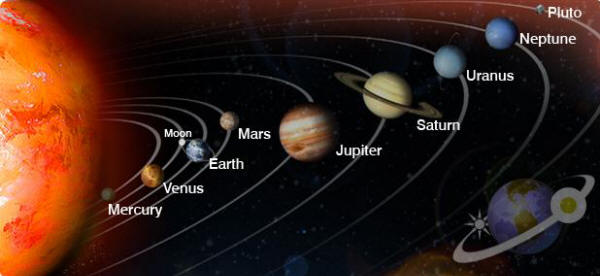 Class
7
Tuesday 9/19/2016
Class
7
Tuesday 9/19/2016The picture on the right is misleading in a few ways. How many problems can you find with the picture?
Today:
- Did anyone measure the moon against your pinky fingernail?
- Objects in the Space --
- Finish sharing objects and research.
- Turn-in research notes (with names on them) and point your object out to Mr. Stapleton one last time so that he can photograph it.
- Prepare for Test on Thursday over objects in space:
- Questions will come directly from the notes.
- You may write notes on a 3"x5" note card and use it on the quiz.
- The quiz will have at least one question about items that you are supposed to be saving in your notebook.
- Check your grade for this class in PowerSchool?
Handouts/Links: Mr. Stapleton's copy of Objects in Space notes
Homework:
- Study for the Test on Thursday. You may use a 3"x5" note card that you have filled out by hand.
- If you did not find Polaris, find one of the stars in the big dipper. Measure its altitude with your quadrant. Draw a diagram showing which star you found. Write down the time, date, and your name. Turn it in before the end of the quarter.
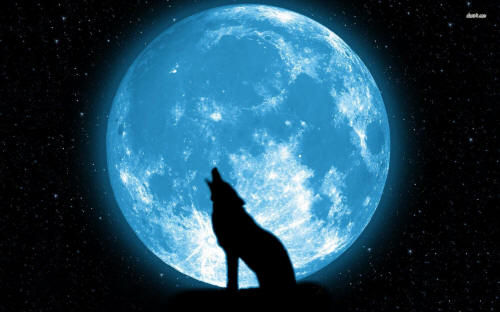 lass
6
Friday 9/15/2016
lass
6
Friday 9/15/20161. What's the current moon phase? Full? Quarter? Crescent?
2. Suppose you hold an object at arm's length and use it to cover up the moon. How large does the object need to be to perfectly cover up the moon? Quarter sized? Dime sized? Something else?
Today:
- Turn in your Finding Polaris data, if you have it.
- Turn in course expectations sheet-- and get it back
- Objects in the Space --
- We had an accident with a constellation. :-(
- Some of you shared slides with me. Before presentations continue, lets put them in the slideshows.
- Finish sharing objects and research.
- Turn-in research notes (with names on them) and point your object out to Mr. Stapleton one last time so that he can photograph it.
Handouts:
Homework: None
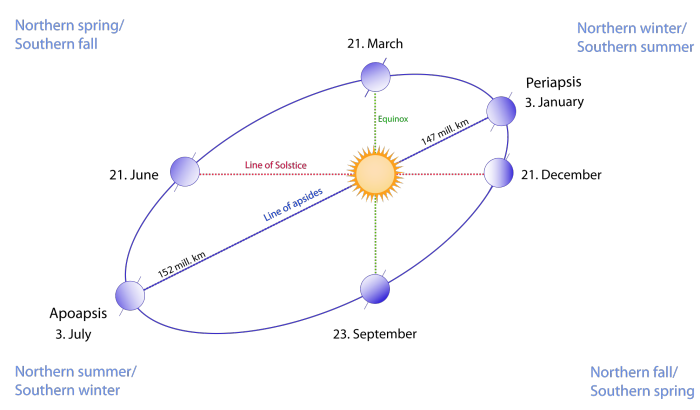 Class
6
Wednesday 9/14/2016
Class
6
Wednesday 9/14/20161. What is gravity?
2. What role does gravity play in the diagram on the right?
3. Are clouds affected by gravity?
4. Is there gravity on the International Space Station?
5. Can you think of something that is not affected by gravity?
6. If you were to locate the Earth's current position on the diagram to the right, where would it be?
Today:
- Turn in your Finding Polaris data, if you have it.
- Turn in course expectations sheet-- and get it back
- Objects in the Space -- Tentative plan
- Today:
- Hang objects
- Share objects and take notes on presentations
Handouts: Objects in Space notes sheet
Homework:
- Signed course expectations sheets are due today.
- On a clear night between now and Friday (Tonight or tomorrow night!), find polaris. Measure its altitude, in degrees. Write down the altitude and the date and time of your observation. Turn your data in to Mr. Stapleton by Friday.
Sometimes you can "see your breath."
1. Why can't you see it right now?
2. I know a way to make my breath visible right now. Can you guess how I do it?
3. Can you guess how this concept relates to our solar system?
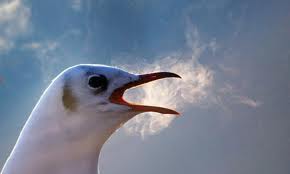
Today:
- Turn in course expectations signatures, if you haven't already.
- Give astrolabes to absent people.
- Turn in your Finding Polaris data, if you have it.
- Turn in course expectations sheet-- and get it back
- Objects in the Universe -- Tentative plan
- Today:
- Build your object. Make sure that it
can be hung from the ceiling.
- B1/2: 8:15-9:10
- B3/4: 9:40-10:35
- Clean up, return unused supplies, label and store
your object.
- B1/2: 9:10-9:19
- B3/4: 10:35-10:44
- Build your object. Make sure that it
can be hung from the ceiling.
- Wednesday: Share your object. Hang objects from the ceiling.
- Today:
Handouts: None
Homework:
- Signed course expectations sheets are due today.
- On a clear night between now and Friday (Mon, Tues, Wed, or Thurs!), find polaris. Measure its altitude, in degrees. Write down the altitude and the date and time of your observation. Turn your data in to Mr. Stapleton by Friday.
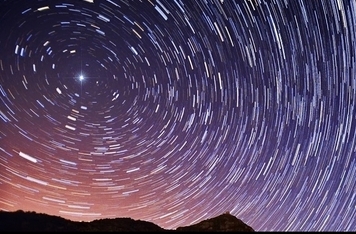
The center star, on the right, is Polaris.
1. What is the common name for polaris?
3. Do you know how a quadrant is used in astronomy?
Today:
- Make an astrolabe and practice using it.
- Turn in course expectations sheet-- and get it back
- Objects in the Universe -- updated plan
- Today:
- Finish Research
- Using Google Slides, create a slide featuring your
object. The reason for the slide is that your
model may not look exactly like the real object in
space. When you share your object with the class,
this slide will be projected onto the classroom screen
to help you better explain the features of your object.
Create a slide with images that will help the rest of
the class to fully understand your object. Add
your name to the slide.
- B1/2: Insert your slide into the B1/2 Google Slides Presentation after the existing slide with your object.
- B3/4: Insert your slide into the B3/4 Google Slides Presentation after the existing slide with your object.
- Prepare to build your object.
- Next Monday (9/12): Build your object. Make sure that it can be hung from the ceiling.
- Next Wednesday: Share your object
- Today:
Handouts:
Homework:
- Signed course expectations sheets are due on Monday.
- On a clear night, find polaris. Measure its altitude, in degrees. Write down the altitude and the date and time of your observation. Then turn your data in to Mr. Stapleton. By Next Friday.
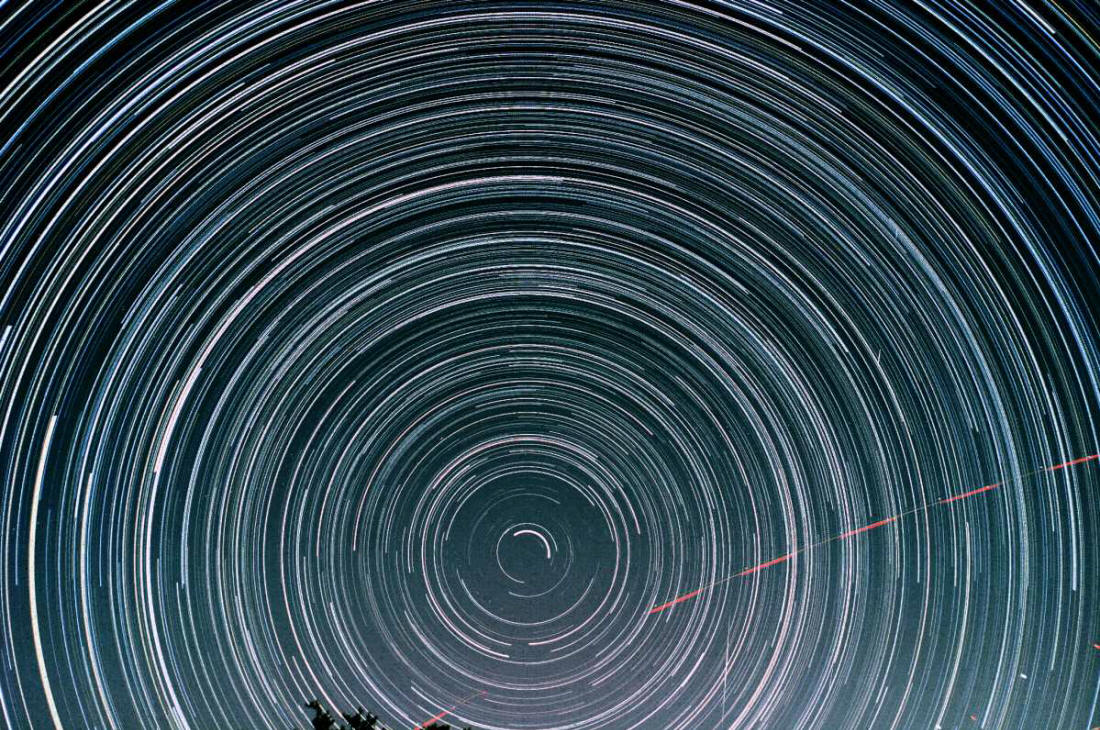
- What are the lines in the sky?
- How was the picture created?
- Why are the lines arranged in a circular pattern?
- a. If a star trail picture is taken in the Northern Hemisphere, in which direction do the circles form? (clockwise or counter-clockwise) b. How do you know?
- Which stars are moving faster, the inner ones or the outer ones?
- If there is a star near the center, what is its name?
- Draw a rough sketch of what the star trails would look like if you created a star trail picture by standing on the equator and pointing a camera eastward.
- Why did the photographer have to stop the picture before the stars made a complete circle?
- If a bicycle had passed through the scene with a flashlight in the spokes of one of it's tires, what would the bicycle light trail have looked like?
Today:
- Turn in course expectations -- and get it back.
- Objects in the Universe -- introduction -- short Video: AMNH
The Known
Universe
- Today:
- Brainstorm objects
- Assign objects
- Brainstorm materials and construction ideas. Most will be roughly shoebox sized.
- Research objects
- Thursday:
- Finish Research
- Create a slide featuring your object
- Next Monday (9/12): Build your object.
- Next Wednesday: Share your object
- Today:
Handouts:
Homework:
- Signed course expectations sheets are due on Friday.
 Class 1
Thursday 9/1/2016
Class 1
Thursday 9/1/20161. What would happen if you made a hole through the center of the Earth, and you jumped in?
2. If you made it all of the way through, where would you come out? (antipodes map)
Today:
- Warm-up
- Enter attendance
- Slideshow
- Course Expectations and class topics
- Name games, etc.
- Short Video: AMNH
The Known
Universe
Handouts:
Homework:
- Share your course expectations handout with your parents. Have them sign and return it by Next Friday (9/9).
Can you point to the North Pole?
Today:
- Learn names
- Warm-up
- Attendance
- Course Expectations Handout
Homework: Share your course expectations handout with your parents. Have them sign and return it by Next Friday (9/9).